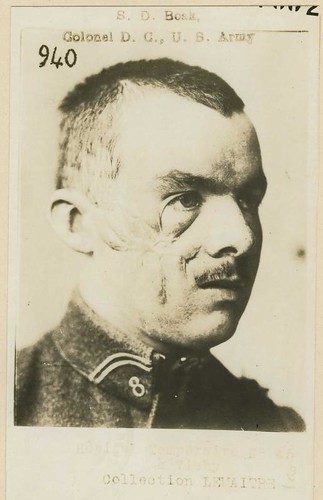This rolled in over the e-transom today. I'm not sure yet how I feel about it the idea, but I think it would be an interesting show. - MikeEXHIBITION OPENING
I am Art - An Expression of the Visual & Artistic Process of Plastic Surgery
Curated by Dr. Anthony Berlet
March 28 - May 9, 2009
Opening reception:
Saturday, March 28, 6-8pm
Presenting work by Anthony Berlet, M.D., Antonino Cassisi, M.D., Michael Cohen, M.D., Scott Spiro, M.D.
Leon Dufourmentel, a pioneer in plastic surgery, said in 1948, “...If I went to Picasso for my portrait, he would probably make me a monster and I should be pleased because it would be worth a million francs. But if Picasso came to me with a facial injury and I made him into a monster, aha, he might not be so pleased.”
This quotation expresses our view, which we hope to share with you in this exhibition, that plastic surgery is a most challenging art form—perhaps the most challenging art form, for our materials are not canvas or clay. Yes, we embrace the great obsession of artists throughout the ages: the human body. But our material is the human body.
We are asked, on a daily basis, to do the impossible, to make the real ideal, to bridge the gap between reality and fantasy. Plastic surgery is the constant struggle between beauty and blood supply
There is art in everything we do. The initial evaluation requires a keen eye. The surgery plan requires artful preparation. The execution can best be described as a well-choreographed ballet of many different steps. Through this dance of medicine and art, science and aspiration, we seek an outcome as beautiful as any painting or sculpture. Every day, we strive to outdo Pygmalion.
Is perfection possible? We know it is not, and yet, that is our calling. We work with terrible constraints, not the least of which is the subjective nature of art itself. Nowhere are human feelings more various and more complex than in perceptions of the body and of the self. We are, all of us, acutely aware of how others see us.
Our field is sometimes associated with excess. We hope to convince you otherwise. For each individual committed to our charge, the stakes could not be higher. In this exhibition, we intend to convey the great care with which we diagnose, counsel, prepare, execute and maintain our artistic creation, with vision, clarity, passion, ingenuity, compassion and, yes, art.
This exhibition will show the many ways in which we express ourselves as artists, borrowing and shaping perceptions. Take a moment to step into the experience of others, whose lives have been transformed at our hands, we trust for the better.
We hope you will come away from our exhibition with a fuller sense of our aesthetic, reconstructive and post-traumatic disciplines. In the gallery space, we want to give you a glimpse into our world, which is never our world alone. Ours is truly the most intimate, the most personal of arts. When we are finished, the product of our labors can turn to us and say, "I am art." That, at least, is what we strive for.
Please join us.
All events are free and open to the public.
apexart
291 Church Street, NYC, 10013
t. 212 431 5270
www.apexart.orgDirections: A, C, E, N, R, W, Q, J, M, Z, 6 to Canal or 1 to Franklin.
apexart's exhibitions and public programs are supported in part by the Andy Warhol Foundation for the Visual Arts, Carnegie Corporation of New York, Edith C. Blum Foundation, Mary Duke Biddle Foundation, The Greenwich Collection Ltd., The William Talbott Hillman Foundation, and with public funds from the New York City Department of Cultural Affairs and the New York State Council on the Arts.























